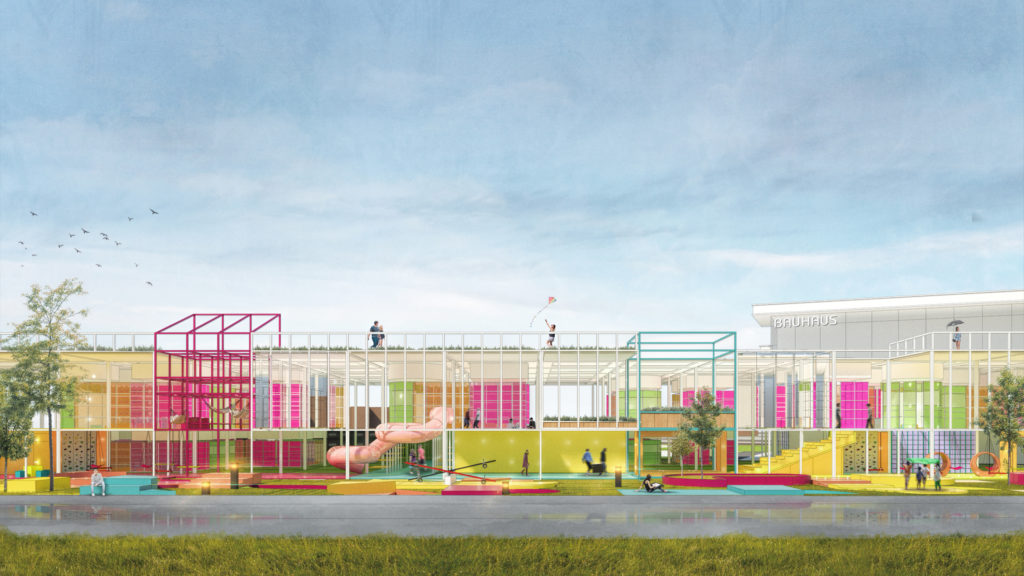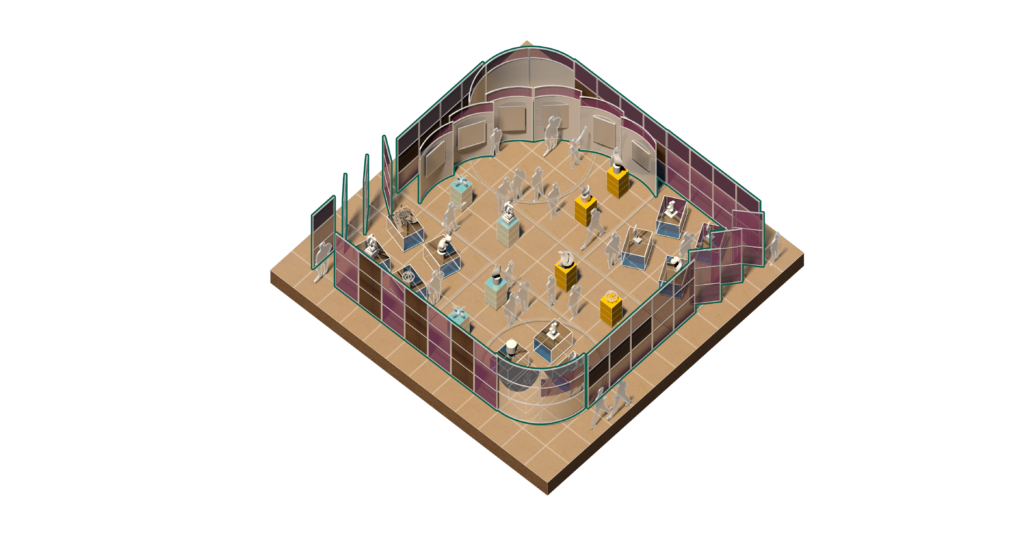Smart Studios: The Smart Studios provide diversified classroom and workshop environments that stimulate active learning and creative flexibility.
Conceptualized as 4m x 4m spaces, these modules can be reconfigured, collapsed and merged with other modules depending on the capacity required by the students.
Interlocking slotted aluminum posts provide the rigid vertical framework that allow the 1m x 1m wall panels to be reconfigured into furniture or partitioning. Meanwhile, the floor is laid with aluminum wall tracks on a 1m x 1m grid to lock the wall panels in place.
Appreciation for Bauhaus Art: The master plan of the new Bauhaus is conceived by overlaying impressionist and modernist art produced by the old Bauhaus movement over a century ago. By referencing the geometric shapes prevalent in their artwork, the new Bauhaus transforms into a playful learning environment that zones the private, public and learning spaces strategically. The circles are nodes where the students and other stakeholders converge. The squares and rectangles are the learning spaces while the triangles are invisible directional cues that lead to the important spaces in the campus. Lastly, the curvilinear forms are diversified learn-and-play experiences that are scattered around the campus.
a. Green Decks – modern problems such as global warming and the Covid pandemic have further pushed the idea of open air classrooms. The green deck serves as an actual installation of sustainable practices and highlights the importance of open spaces as alternative learning spaces.
b. Lightweight Steel Frames – conceptualized as modular building blocks for the learning spaces, these 6m x 6m cubes promote a sense of formality akin to the original Bauhaus building.
c. Learn-and-Play Hardscapes – patterned after Bauhaus-inspired geometric shapes, these active spaces intend to give the students a different outlet to study, be inspired and cultivate their ideas.









